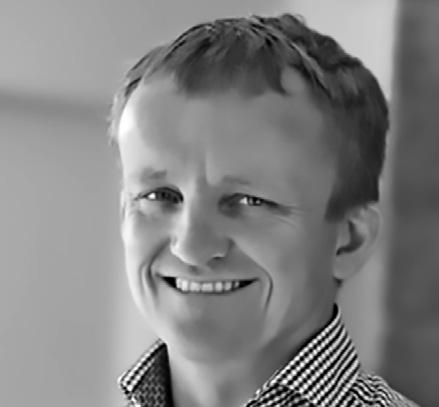
3 minute read
Intersection Crossing paths with engineers.
Crossing paths with engineers.
After finishing university, Darren Wright MNZM worked as a commodities trader for Hess Corporation in London and Rurhgas in Essen, Germany before returning to New Zealand in 2002 with his young family. Following the 2010 Canterbury earthquakes, Darren has focused his attention on earthquake recovery as an independent advocate for insurance claims and then for the Ministry of Business, Innovation and Employment’s (MBIE) Residential Advisory Service. In 2018, he helped MBIE establish the Greater Christchurch Claims Resolution Service (GCCRS) to support homeowners with their insurance and Earthquake Commission (EQC) claims and is currently its Director. In 2016, he was made a Member of the New Zealand Order of Merit for his services to the community and earthquake recovery.
Advertisement
How do you work with engineers?
The GCCRS works closely with engineers. It has supported nearly 4,000 homeowners with their claims, all of which involve engineering of some level. In conjunction with Te Ao Rangahau, we established a panel of engineers to support homeowners in their EQC/ insurance claims. This ranges from high-level Initial assessments through to peer reviews and full reports. We also established a facilitation model where panel engineers facilitate technical disputes between engineers engaged by homeowners and EQC/insurers. More recently, we set up a reinstatement recommendation protocol where an engineer from the panel is engaged to work with both parties that have agreed to be bound by the outcome.
How does your work impact on engineers?
One of the most challenging aspects of the Canterbury Earthquake Sequence (CES) has been the time it has taken to resolve claims and the often complex technical and personal aspects of the claim. Engineers are often required to manage expectations of both homeowners and EQC/insurers in highly charged, complex situations. We often see engineers’ reports for properties coming to very different conclusions, both as to the damage sustained and the repair required.
How do engineering decisions impact on your work?
Over the past 12 years, engineering has often been the most challenging aspect of the CES. An engineer’s report can be the difference between an epoxy repair to a foundation or a total rebuild of a house. Engineering decisions impact not only on my work, but also on the lives and wellbeing of homeowners on a daily basis. GCCRS has worked alongside engineers and Te Ao Rangahau to make real changes to people’s lives as we have helped them navigate and conclude the complex world of EQC and insurance.
What are some observations you’d make after working with engineers?
I have had the privilege of working with many very talented engineers both in
Darren Wright MNZM
Based in: Christchurch Role: Director Greater Christchurch Claims Resolution Service (GCCRS) Education: Bachelor of Arts, University of Otago, 1991; Master of Science (Hons), University of Canterbury, 1993
the insurance and the commercial property space. While technical skills are important, it is the personal and human touch that resolves disputes. Also, they focus on the evidence in front of them. When starting this role, I thought engineering was a science. I now think engineering is also a dark art with many variables and often many unknowns that require constant problem solving.
What do you wish all engineers understood about your role?
I would love to see all engineers working in the insurance space take the lead supporting their clients to understand the importance of correct engagement. Te Ao Rangahau has a best practice guideline on how to engage an engineer. All engineers should use this when being engaged by homeowners and EQC/ insurers. Plus we all need to remember the importance of forensic explanations for lay people. Reports that detail the “why” go a long way to helping people understand their situation, and, subsequently, the journey they need to go on to resolve their problems.










